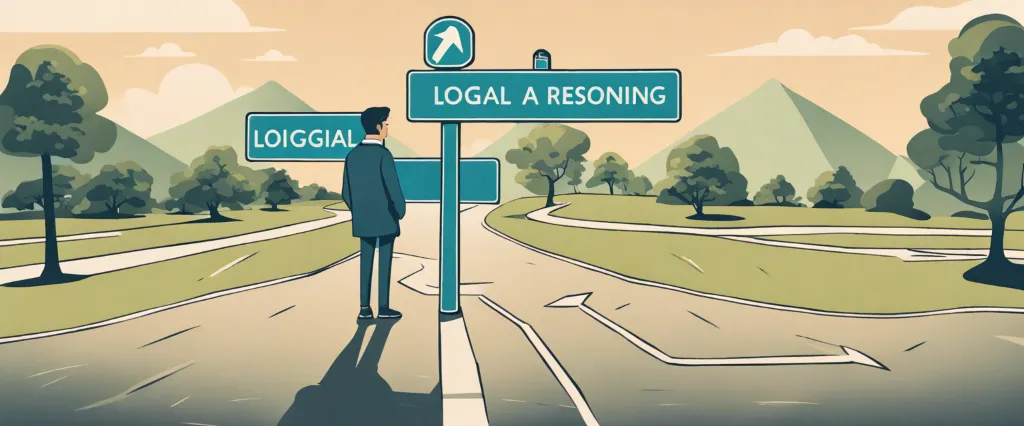In “How to Change Your Mind,” Michael Pollan takes readers on a journey through the history, science, and therapeutic potential of psychedelic drugs. A renowned author and journalist, Pollan explores the resurgence of interest in these substances and their potential to transform our understanding of consciousness and mental health. Drawing on personal experiences and interviews with experts in the field, Pollan challenges preconceived notions about psychedelics and invites readers to reconsider their potential for healing and personal growth.
Chapter 1: Introduction to the history and stigma of psychedelics.
In Chapter 1 of “How to Change Your Mind” by Michael Pollan, the author provides an introduction to the history and stigma surrounding psychedelics. Pollan traces the origins of psychedelics back to ancient civilizations where these substances were used in religious and spiritual practices. However, in more recent history, psychedelics became associated with the counterculture movement of the 1960s and were eventually banned due to their perceived negative effects.
Pollan explores how the demonization of psychedelics led to a lack of research and understanding of their potential therapeutic benefits. He discusses how pioneering researchers like Timothy Leary and Ram Dass sparked a renewed interest in psychedelics in the 1960s but also contributed to their negative reputation.
Throughout the chapter, Pollan highlights the current resurgence of interest in psychedelics for their potential therapeutic benefits, especially in treating mental health conditions such as depression and anxiety. He also acknowledges the continued stigma surrounding psychedelics and the barriers to research and acceptance in mainstream society.
Overall, Chapter 1 sets the stage for Pollan’s exploration of psychedelics and their potential to change our understanding of consciousness and mental health.
Chapter 2: Exploration of the science and research behind psychedelics.
In Chapter 2 of “How to Change Your Mind” by Michael Pollan, the author delves into the history and research surrounding psychedelics. He highlights the initial discovery of LSD by Albert Hofmann and the subsequent fascination with its mind-altering effects. Pollan discusses the work of early researchers such as Humphry Osmond, Aldous Huxley, and Timothy Leary, who believed psychedelics held the potential to revolutionize mental health treatment.
The chapter outlines how psychedelics were initially studied for their therapeutic potential in treating a variety of mental health conditions, including depression, anxiety, and addiction. Pollan explores the promising results of early studies and the subsequent backlash that led to the criminalization of psychedelics in the 1960s.
However, recent research has reignited interest in psychedelics for their therapeutic benefits, with studies showing positive outcomes in treating conditions like PTSD and depression. Pollan discusses the resurgence of research and the shift in societal attitudes towards psychedelics.
Overall, Chapter 2 provides a comprehensive overview of the science and research behind psychedelics, shedding light on their potential to revolutionize mental health treatment.
Chapter 3: Insights into the therapeutic potential of psychedelics for mental health.
Chapter 3 of “How to Change Your Mind” explores the therapeutic potential of psychedelics for mental health. Michael Pollan delves into the history of psychedelic therapy, tracing its roots back to the 1950s and 1960s when researchers like Humphry Osmond and Sidney Cohen conducted groundbreaking studies on the therapeutic effects of substances like LSD and psilocybin. These early studies showed promising results in treating various mental health conditions, from depression and anxiety to addiction and PTSD.
Pollan also discusses the recent resurgence of interest in psychedelic therapy, with research institutions like Johns Hopkins and NYU conducting clinical trials to explore the benefits of psychedelics for mental health. He introduces the concept of the “mystical experience” that often accompanies psychedelic therapy, describing it as a powerful tool for promoting healing and personal growth.
Overall, Pollan argues that psychedelics have the potential to revolutionize mental health treatment by offering a new paradigm for understanding and addressing psychological issues. By allowing individuals to access deeper parts of their consciousness and confront unresolved traumas, psychedelics have the power to catalyze profound shifts in perspective and facilitate lasting change in patients’ mental health.
Chapter 4: Examination of personal experiences and transformations with psychedelics.

In Chapter 4 of Michael Pollan’s book “How to Change Your Mind,” he delves into personal narratives of individuals who have experienced transformative effects from psychedelics. He explores the stories of people who have used these substances in therapeutic settings, including patients with terminal illnesses, individuals struggling with addiction, and those seeking spiritual enlightenment.
Pollan describes how psychedelics have the potential to catalyze profound changes in one’s consciousness, leading to spiritual insights, emotional healing, and a greater sense of connectivity with the natural world. He recounts the experiences of individuals who have reported feelings of ego dissolution, mystical experiences, and a renewed sense of purpose and meaning in their lives.
Through these personal accounts, Pollan highlights the therapeutic potential of psychedelics in treating a range of mental health issues, including depression, anxiety, and trauma. He also explores the neurological mechanisms behind these transformative experiences, shedding light on how psychedelics can rewire the brain and promote healing.
Overall, Chapter 4 of “How to Change Your Mind” provides a compelling look at the powerful effects of psychedelics on personal growth and transformation, offering readers a deeper understanding of the potential benefits of these substances when used mindfully and responsibly.
Chapter 5: Analysis of the cultural and societal shifts around psychedelics.
In Chapter 5 of “How to Change Your Mind,” Michael Pollan explores the historical, cultural, and societal shifts surrounding psychedelics. He delves into the 1960s counterculture movement and the widespread use of psychedelics like LSD and psilocybin during that era. Pollan examines how these substances were initially embraced by some as tools for personal and spiritual growth, but later became associated with rebellion, drug abuse, and societal upheaval.
Pollan also discusses the backlash against psychedelics and the subsequent criminalization of these substances in the late 1960s and early 1970s. He highlights the role of Timothy Leary and others in promoting the recreational use of psychedelics, which ultimately led to a cultural backlash and the imposition of harsh drug laws.
Pollan then reflects on the recent resurgence of interest in psychedelics for therapeutic purposes and the shifting attitudes towards these substances in mainstream culture. He explores how scientific research has demonstrated the potential of psychedelics in treating mental health conditions such as depression, anxiety, and PTSD. Pollan concludes that psychedelics have the potential to revolutionize our understanding of the mind and mental health, and calls for a reevaluation of their cultural and societal significance.
Chapter 6: Discussions on the neuroscience and psychology of psychedelic experiences.
In Chapter 6 of “How to Change Your Mind,” Michael Pollan delves into the neuroscience and psychology behind psychedelic experiences. He explores the various ways in which psychedelics, such as LSD and psilocybin, affect the brain and alter consciousness. Pollan discusses how psychedelics work on the brain by binding to serotonin receptors and disrupting the default mode network, leading to a dissolution of ego and a sense of interconnectedness with the world.
Pollan also delves into the psychological aspects of psychedelic experiences, highlighting the importance of set and setting in determining the nature of the trip. He discusses how the therapeutic use of psychedelics can lead to profound insights, emotional breakthroughs, and spiritual experiences. Pollan explores the potential of psychedelics to treat mental health conditions such as depression, anxiety, and addiction, and the research that is currently being conducted in this area.
Overall, Chapter 6 provides a fascinating insight into the science behind psychedelic experiences and the potential benefits they may offer in terms of personal growth and healing. Pollan’s exploration of the neuroscience and psychology of psychedelics sheds light on why these substances have the power to profoundly change our minds and our lives.
Chapter 7: Contemplations on the spiritual and existential implications of psychedelics.
In Chapter 7 of “How to Change Your Mind” by Michael Pollan, the author explores the spiritual and existential implications of psychedelics. Pollan delves into the history of psychedelics and their role in various religious and spiritual practices, highlighting their ability to induce profound mystical experiences. He discusses how these experiences can lead individuals to question their beliefs, experience a sense of interconnectedness with the universe, and contemplate the nature of reality and consciousness.
Pollan also addresses the ethical considerations surrounding the use of psychedelics in a therapeutic context, emphasizing the importance of set and setting in determining the outcome of a psychedelic experience. He explores the potential of psychedelics to help individuals confront and process their fears, traumas, and existential questions, leading to personal growth and transformation.
Overall, Pollan’s contemplations on the spiritual and existential implications of psychedelics in Chapter 7 provide insight into the profound effects these substances can have on individuals’ belief systems, sense of self, and understanding of the world around them. Through personal anecdotes and research findings, Pollan invites readers to consider the potential for psychedelics to inspire introspection, awe, and a deeper connection to the mysteries of existence.

Chapter 8: Provocations to reconsider our understanding of consciousness and well-being through psychedelics.
In Chapter 8 of How to Change Your Mind, Michael Pollan explores the profound impact that psychedelics have on our understanding of consciousness and well-being. He delves into the ways in which these substances can provoke us to reconsider our notions of the self, reality, and the nature of existence. Pollan examines the research conducted on psychedelics, highlighting studies that suggest these substances can alter brain activity in ways that lead to enhanced introspection, empathy, and creativity.
Pollan also discusses the therapeutic potential of psychedelics, particularly in the treatment of mental health disorders such as depression, anxiety, and addiction. He describes the experiences of individuals who have undergone psychedelic-assisted therapy and how it has transformed their lives by providing them with newfound insights, perspectives, and a sense of interconnectedness with the world around them.
Overall, Chapter 8 challenges readers to question their preconceived notions about consciousness and well-being, and to consider the transformative possibilities that psychedelics offer in expanding our minds and exploring the depths of human experience. Pollan suggests that these substances have the potential to revolutionize our understanding of mental health and spiritual growth, leading to a deeper appreciation of the profound mysteries of the mind.
After Reading
In “How to Change Your Mind,” Michael Pollan explores the history, science, and potential benefits of psychedelic drugs for mental health and personal growth. Through engaging storytelling and thorough research, Pollan introduces readers to the transformative power of psychedelics and the ways in which they are revolutionizing our understanding of consciousness and the self. By delving into the experiences of individuals who have used psychedelics for therapeutic purposes, Pollan offers a compelling argument for further research and exploration of these substances as tools for personal and spiritual development. Overall, “How to Change Your Mind” opens up new possibilities for healing and self-discovery through the use of psychedelic drugs.
1. “The Psychedelic Experience: A Manual Based on the Tibetan Book of the Dead” by Timothy Leary, Ralph Metzner, and Richard Alpert – This book explores the psychedelic experience and offers guidance on how to navigate it for personal growth and transformation.
2. “LSD: My Problem Child” by Albert Hofmann – This memoir by the discoverer of LSD provides an in-depth look at the history and potential of psychedelic substances for personal and spiritual development.
3. “The Doors of Perception” by Aldous Huxley – In this classic work, Huxley explores the effects of mescaline on perception and consciousness, offering profound insights into the nature of reality.
4. “DMT: The Spirit Molecule” by Rick Strassman – This book delves into the mysterious and powerful effects of DMT, a naturally occurring psychedelic compound, on the human mind and spirit.
5. “The Electric Kool-Aid Acid Test” by Tom Wolfe – This non-fiction book follows author Ken Kesey and his group of Merry Pranksters as they travel across the United States in a psychedelic bus, experimenting with LSD and challenging societal norms.




